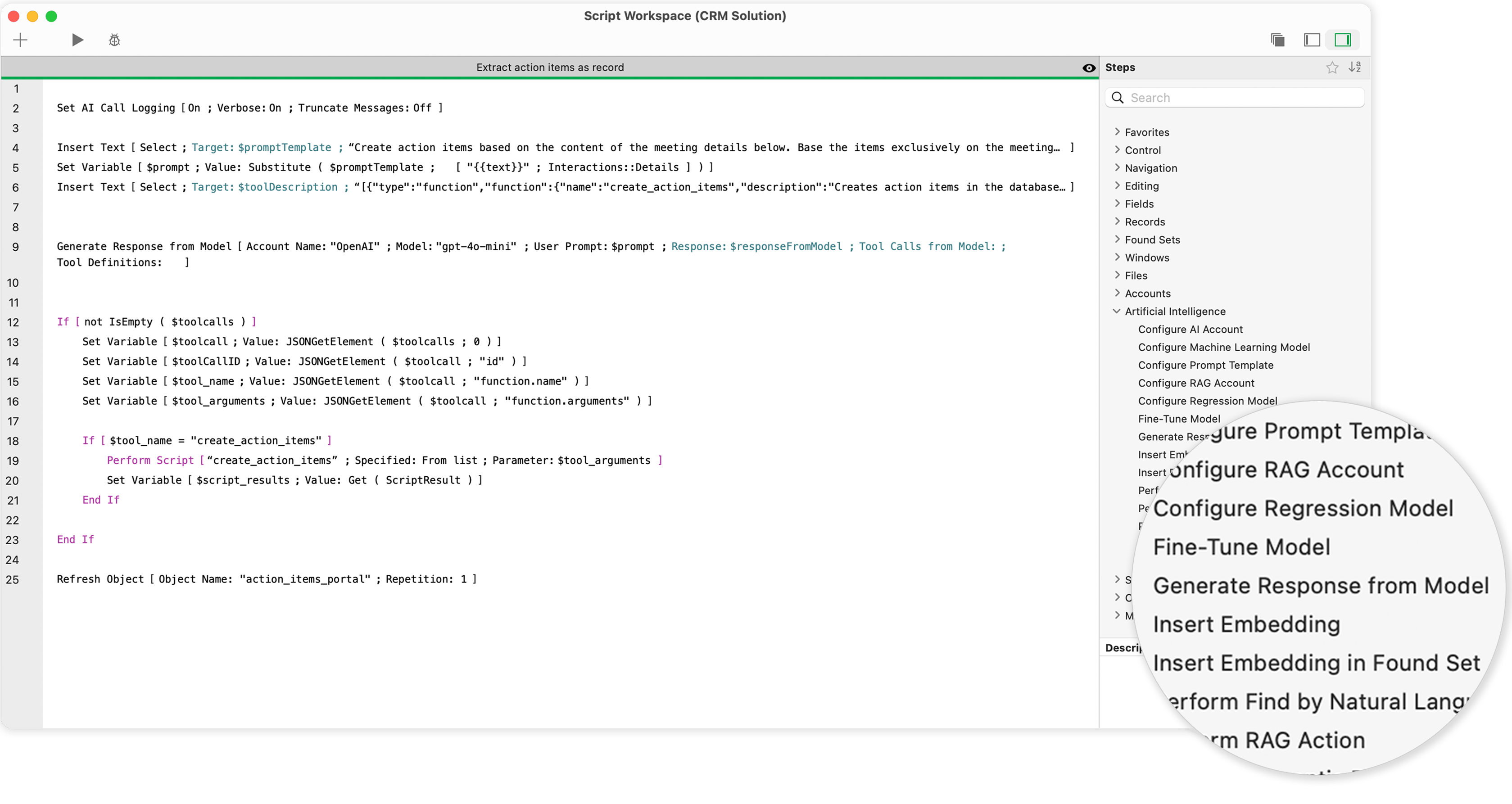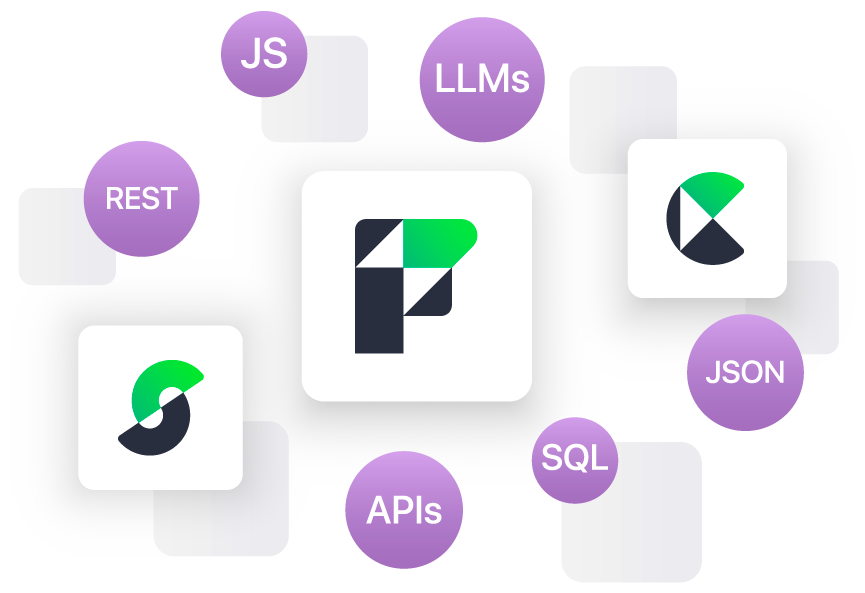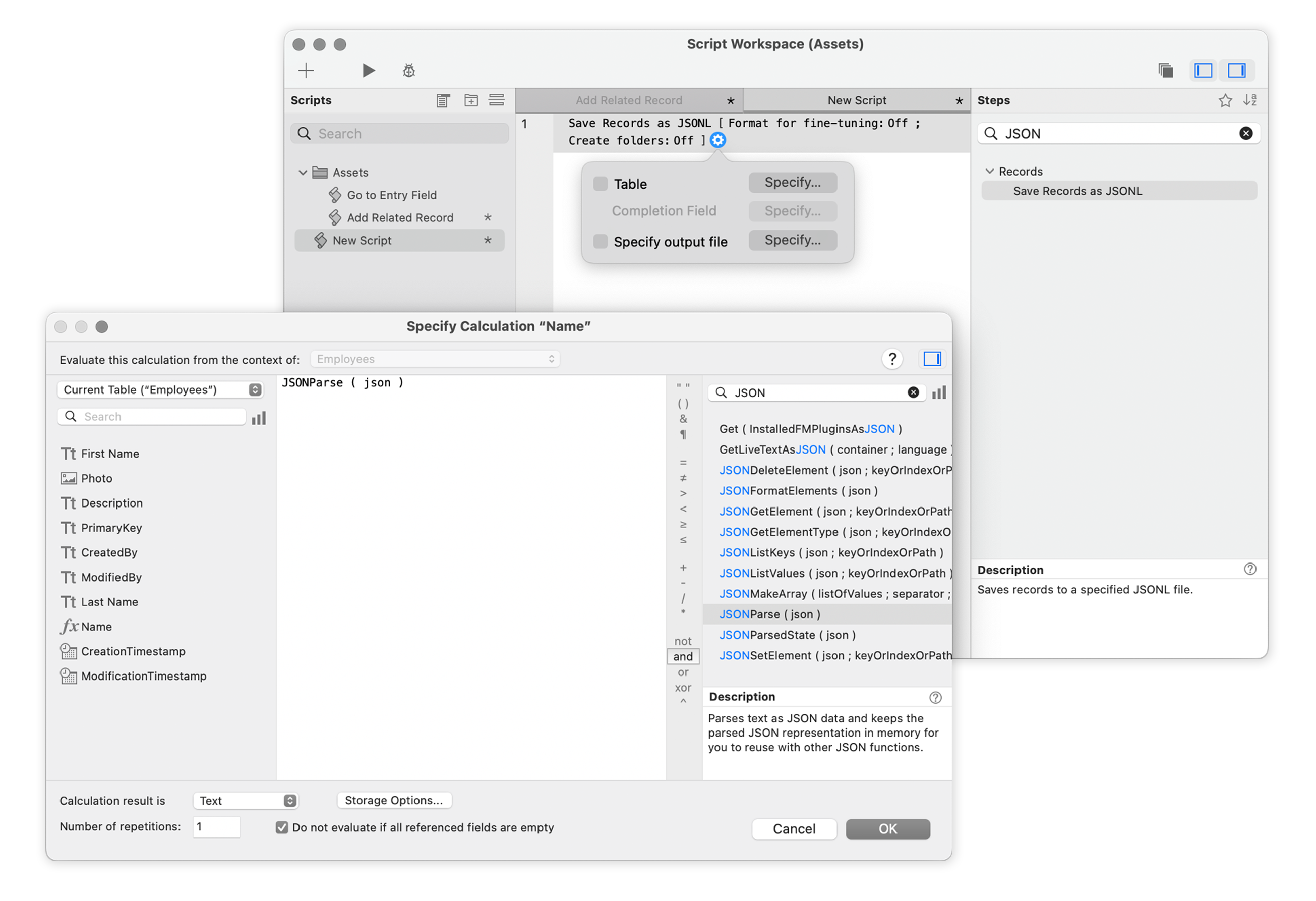Claris FileMaker
AI makes your custom apps
even smarter.
With Claris FileMaker's flexibility and low-code efficiency, build AI into your custom business apps.

With Claris FileMaker's flexibility and low-code efficiency, build AI into your custom business apps.

You have some ideas around how to optimize the way your team works. With Claris FileMaker, you can build the perfect tech stack to make it happen.

Maximize speed-to-value. Quickly create custom apps that deliver efficiencies, grow your competitive edge, and help you win.

Say “yes” to AI. Build limitless AI-powered business solutions to enhance apps like never before.

Integrate with everything. FileMaker integrates with your systems to create the ultimate workplace operating system.
From in-app assistants to natural language queries, deliver quick ways for users to unlock new data insights — without ever sharing private info with cloud services.
Learn more
Integrate custom apps with Claris Studio and Claris Connect. And if needed, extend apps using JavaScript, JSON, and more.

Increased administrator visibility and control of schedules and users means you can deploy apps quickly to the teams who need them.

Develop more quickly with new scripting capabilities, enhanced JSON performance, and better organizational tools for maintainable solutions.

Bring the power of desktop applications to mobile devices so your users can get the most out of your apps.


FileMaker works natively across Windows, macOS, Linux, iOS, iPadOS, and across the web. Deploy to the cloud, on-premise, hybrid, mobile and even offline.
FileMaker has really given us the backbone and the data and the information to enable us to grow our business.
Travis Osborne, CEO and Founder, Mobile Tyre Shop

AES-256 encryption for data at rest. SSL/TLS 1.2 encryption for data in transit.
SOC 2® Type 2 report and ISO ISO/IEC 27001 and 27018 certifications for cloud services.
Let's Encrypt offers simpler setup and better control for managing certificates — more cost-effectively and with less effort.
How does FileMaker and the Claris platform align with your IT requirements?
Find out moreAlong with FileMaker, our platform features Claris Studio and Claris Connect — tools accessible with your FileMaker 2025 licensing.

Create custom applications with a low-code development tool and build innovative solutions that power and automate the entire business.

Build rich, web-based experiences using scalable web forms. Get responsive views of your information and two-way data integration with FileMaker solutions.

Integrate your tech stack, connect custom apps, and automate business workflows, so everything works together seamlessly.
Build, host, and deploy with flexibility, optimal performance, and enterprise-grade security. FileMaker tools support every step of the process so you can deliver the highest-performing custom applications ever.
BUILD & CONNECT
Build robust custom apps that run your operations with a professional, powerhouse platform. Solve the hard problems that matter with fast, flexible software that can continuously adapt to changing business needs.
HOST
Deploy Claris apps in the cloud in just minutes. No server software or hardware is needed. Get the latest features, functionality, and security updates faster and more efficiently.
HOST
Securely host your Claris apps on premise so you can share information on any device in real time with your team, providing greater visibility across your organization.
DEPLOY
Help your team be more productive anywhere with access to your Claris apps on iPad and iPhone devices. Claris Go is ideal for mobile teams in the field or away from a desk.
DEPLOY
Easily manage and share your business information. Run your apps natively in a web browser, and access them from any computer or mobile device.
Claris FileMaker works with Claris Connect and Claris Studio so you can build and connect your custom apps, integrate existing data, and automate workflows.
Explore the Claris platform

Get FileMaker support and resources from a community of problem solvers on standby.
Find out how the latest FileMaker features help improve a developer's life.
Join Claris CommunityGet inspiration and help from 40,000+ of the most helpful FileMaker developers around the world.

Work with an expert who can help guide, plan, and even build your next operational app.
Connect with a Claris Partner who can build and deploy your solution.
Contact usGet help and guidance from a member of the Claris team.
Or call us.
If you prefer, we're just a phone call away.
North America: +1 (800) 725-2747
United Kingdom: +44 (0) 20 8268 6030
Australia: 1800 028 316
